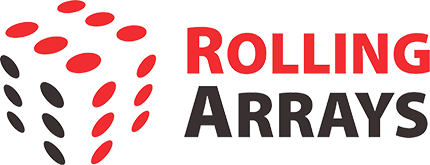
Resources > Blog > Digital Wellbeing : Taking a Step Towards Better Health
Digital wellbeing : taking a step towards better health

Employers are now navigating how to maintain digital wellbeing, especially among employees who spend most of their time on computers. To achieve this, most employers rely on technology. So, what is Digital Wellbeing?
Digital wellbeing refers to the use of technology to assure mental and physical health.
It refers to the use of technology to assure mental and physical health.
The phrase was coined after seeing a massive surge in the usage of smartphones and the internet. According to Statista, the average daily time spent using the internet by Singapore respondents in the third quarter of 2021 was around 7 hours 29 minutes. Researchers are investigating the health implications and the resultant effects this might carry. This is made worse for those who switched to remote work during the pandemic and spent an additional two hours daily on their laptops. Additionally, long-term work-from-home may result in more extended workdays. Eventually, employees experienced stress and burnout quite often.
In early April 2020, 73 percent of UK respondents said they handled pandemic stress well. Five months later, it was 65 percent. For over two years, pandemic weariness has reduced the coping abilities of employees to deal with work related stress that is exacerbated by measures brought about due to Covid19. As remote and hybrid mode of working becomes more prevalent, more businesses are investing in a digital workplace. As a result, digital communication platforms like Slack and Teams are being used more than ever before. Technology can generate digital overwhelm if best practices are not followed. That’s why we must determine the root cause of the problem and solve it as soon as possible.
The role of technology in employee stress and burnout
Digital collaboration tools necessitate that employee remain online throughout the day. Anyone who worked from home during the initial lockdowns discovered the dangers of continuous screen time.
According to an article by Mayo clinic, there are many wellness benefits that come with screen time reduction. It can improve your physical health, free up time to truly rest, allow time for true social connections, boost your mood and bandwidth to build community.
What HR can do to promote digital workplace wellness
Digital workplaces may appear to be an absurd solution to employee wellness however, digital well-being entails making proper use of technology.
Using technology for everyday work is inevitable now: introducing standards and best practices limits long-term negative repercussions. Appropriate strategies can aid in promoting mental and digital health in the digital workplace.
Deactivate
Work-related burnout is especially prevalent in Asian countries, owing to a prevalent workaholic or “always on” culture. Employees feel obligated to work long and hard hours, even if they are unreasonable. According to a 2019 survey, 92 percent of Singaporeans are stressed at work, with 13 percent reporting that their stress is unmanageable. A separate study published in 2019 discovered that Singapore was the second-most overworked city in their sample of 40, trailing only Tokyo.
When remote or hybrid employees’ online status is monitored, they find it difficult to turn off a computer. Work-life balance is difficult for people who cannot physically or psychologically “turn off.” Managers or HR can help by establishing availability hours and encouraging co-workers to call only when necessary. Turning off notifications on your phone and laptop can help.
Encourage employees to incorporate movement into their workstations.
Sitting for hours at a time, whether in a physical office or at home, is taxing on the body. Businesses should encourage employees to move around in whatever way suits them in either scenario. This could include using an under-the-desk pedal exerciser or a standing desk. It could also be as simple as getting up every hour and going for a short walk around the house or office.
A Fitbit may be useful for employees who become so engrossed in their work that they forget to move around. Most models include a feature that causes the wristband to vibrate at a predetermined time if the wearer still needs to walk a certain number of steps in an hour.
Use the appropriate platform for critical communication.
Successful companies communicate effectively by transferring conversations to relevant platforms. Best practices for the digital workplace can be beneficial:
- Use the intranet for top-down messaging rather than a mass email.
- Create Microsoft Teams channels instead of email for quick cooperation.
- While Using Teams, use ‘@ mentions’ to reach out to the appropriate people.
- Employees can save an hour of tense messaging with a 5-minute video conversation.
- Avoid emailing non-relevant persons.
Include team wellness sessions.
The digital workplace should be about more than just employment for digital welfare. For example, Microsoft Teams has numerous communication channels, shared documents, and continual notifications. HR and manager seminars that are innovative can soften the platform. Hold non-work-related coffee chats regularly. Invite outside speakers to speak to your staff on mindfulness, meditation, or yoga.
Platforms such as Mindfi and Intellect would be valuable additions to improve wellness in the organizations. We know digital well-being is highly personal and doesn’t come with a one-size-fits-all solution, but hopefully, these tips can help you achieve your specific goals.




